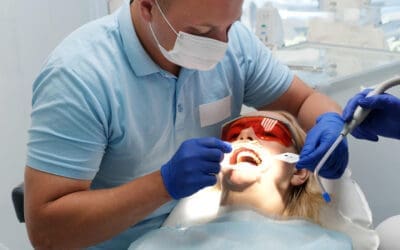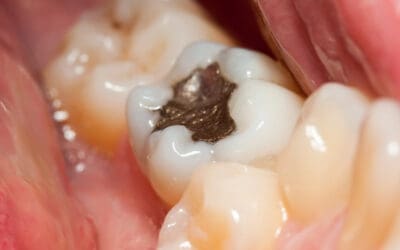Are you experiencing dental pain after fillings and wondering how to manage it? Dental pain after fillings is a common concern, often resulting from the tooth’s adjustment to the new material or sensitivity in the treated area. Understanding the nature of this discomfort can help in recognizing when it might be a normal part of the healing process.
Dental Pain After Fillings: Understanding Dental Pain Causes
Experiencing dental pain after fillings is a common concern for many patients. This discomfort can arise from various factors, including the sensitivity of the tooth nerve, the depth of the cavity, or even the type of filling material used. When a dentist removes decay and fills a cavity, the procedure can sometimes irritate the tooth’s nerve, leading to temporary pain or sensitivity. Additionally, if the filling is too high or not properly aligned with your bite, it can cause pressure and discomfort when chewing.
Another potential cause of dental pain after fillings is the natural response of the tooth to the procedure. The tooth may need time to adjust to the new filling, especially if it is a deep cavity that requires extensive work. In some cases, the pain might be due to an underlying issue that wasn’t fully addressed during the initial treatment. For more detailed information on what happens during these procedures, you can read our article on Fillings Dental Procedures Explained for Patients.
Common Symptoms After Fillings
Experiencing some discomfort or sensitivity after getting a dental filling is quite common. Patients often report feeling a heightened sensitivity to hot and cold temperatures, which can be attributed to the dental work affecting the nerve endings in the tooth. This sensitivity usually diminishes over time as the tooth adjusts to the new filling. Additionally, some individuals may notice a slight change in their bite, which can occur if the filling is slightly higher than the surrounding teeth. This sensation typically resolves as the filling settles into place.
Another common symptom following a dental filling is mild pain or tenderness in the treated area. This discomfort is generally temporary and can result from the pressure applied during the procedure or the materials used in the filling. It’s important to monitor these symptoms and consult with a dental professional if they persist or worsen. For more information on what to expect after a filling, you can visit our page on Arlington Dental Fillings Services.
Duration of Post-Filling Discomfort
Experiencing dental pain after fillings is a common concern for many individuals, and understanding the typical duration of this discomfort can provide some reassurance. Generally, mild to moderate sensitivity or pain following a dental filling is expected and can last for a few days to a couple of weeks. This discomfort is often due to the irritation of the tooth’s nerve or the surrounding tissues during the filling procedure. While the intensity and duration of dental pain after fillings can vary depending on factors such as the size and location of the filling, most people find that their symptoms gradually subside as the tooth adjusts to the new filling.
When to Contact Your Dentist
Experiencing dental pain after fillings is not uncommon, but it’s important to know when this discomfort might require professional attention. If the pain persists beyond a few days, intensifies, or is accompanied by symptoms such as swelling, fever, or an unusual taste in your mouth, it may be time to reach out to your dentist. These could be signs of complications that need to be addressed promptly to prevent further issues. Remember, your dentist is there to ensure your oral health is maintained and any concerns are swiftly managed. For those in the Arlington area, Lighthouse Dental is a trusted choice for addressing dental concerns, and you can find more information by visiting their Arlington Dentist page.
Managing Sensitivity to Temperature
Experiencing dental pain after fillings, particularly sensitivity to temperature, is a common concern for many individuals. This sensitivity can manifest as a sharp, sudden pain when consuming hot or cold foods and beverages. The discomfort arises because the filling process can sometimes irritate the nerves within the tooth, leading to heightened sensitivity. While this sensation is typically temporary, it can be quite uncomfortable. Understanding that this is a normal part of the healing process can help in managing expectations and reducing anxiety related to dental pain after fillings.
Recognizing Normal vs. Abnormal Pain
Understanding the difference between normal and abnormal dental pain after fillings is crucial for maintaining oral health. It’s common to experience some sensitivity or mild discomfort following a dental procedure, as your teeth and gums adjust to the new filling. This type of pain typically subsides within a few days. However, if the dental pain after fillings persists, intensifies, or is accompanied by other symptoms such as swelling or fever, it may indicate an underlying issue that requires attention. Recognizing these signs can help in determining whether the pain is a typical part of the healing process or if it suggests a more serious concern.
Impact of Bite on Fillings
Experiencing dental pain after fillings can often be attributed to the impact of your bite on the newly placed filling. When a filling is inserted, it must align perfectly with your natural bite to ensure comfort and functionality. If the filling is even slightly higher than the surrounding teeth, it can cause discomfort or pain when you bite down. This misalignment can lead to additional pressure on the filled tooth, resulting in sensitivity or soreness. Understanding how your bite interacts with your fillings is crucial in identifying the source of dental pain after fillings and ensuring that your dental health is maintained effectively.
Dietary Considerations Post-Filling
After receiving a dental filling, it’s important to be mindful of your dietary choices to help manage dental pain after fillings. Consuming soft foods can be beneficial as they are less likely to irritate the treated area. It’s also advisable to avoid extremely hot or cold foods and beverages, as they can exacerbate sensitivity and discomfort. Being cautious with your diet can play a role in minimizing dental pain after fillings, allowing for a smoother recovery process.
Long-term Care for Dental Fillings
Proper long-term care for dental fillings is essential to minimize the risk of dental pain after fillings and ensure their longevity. Maintaining good oral hygiene practices, such as regular brushing and flossing, can help prevent decay around the filling area. It’s important to be mindful of any changes in your bite or sensitivity, as these could indicate issues with the filling that may need attention. Regular dental check-ups allow for professional monitoring of your fillings, ensuring they remain intact and functional. By being attentive to your oral health, you can help reduce the likelihood of experiencing dental pain after fillings and maintain a healthy smile.
Conclusion
If you’re experiencing dental pain after fillings, don’t hesitate to reach out for professional advice by calling 703-337-3994 or check out our Google Maps reviews for more information.






